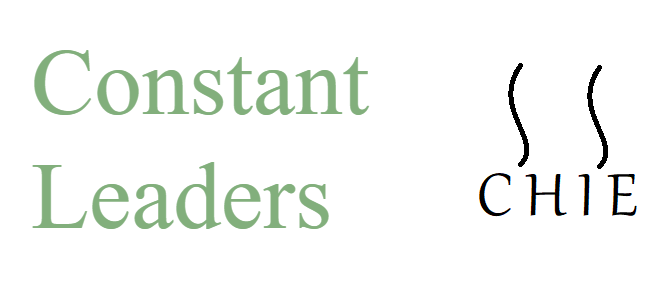
Leaders are constantly looking for ways to improve productivity and efficiency for their teams. One of the thing that is easy to overlook is the work space that your team are working in. Consider your team’s working environment and how that effects their ability to be productive. Having a well thought out working environment versus a cluttered and poorly designed space makes a world of difference.
As leaders are pushing for better productivity from their teams, quite a bit of investments goes into tools and practice. Training and individual growth are usually on the top of the list of things to invest in. Working environment are rarely considered. It’s often just viewed as something the company provides and it’s accepted as is.
When the workspace is designed by an organization, there are conflicts in interest that must be considered carefully. From the costs and space efficiency usage perspective, the company would always want to fit in as much people and equipment as possible. The thinking is that the more people and equipment can be fit into the space, the more productivity can be squeezed out.
While having more resources can potentially produce more, it’s not always the case. How efficient and effective those resources are matters greatly in the final productivity outcome. A well designed working environment promotes and allows employees to have more energy to be productive. Poorly laid out working environment will have the opposite effect. Employees will be lethargic and will reduce productivity.
When considering your team’s working environment, remember that it’s not for you. It is not for one person, but something that promotes collaboration and efficiency for a group. Take a look at your team’s existing working environment and consider the following. If there are any areas that are lacking, what adjustments can be made to improve the situation?
- Desk real estate – Having sufficient desk surface is obviously important. But what is sufficient and what is frivolous? Consider what your team needs on a regular basis and make sure that there are adequate desk top space for all the equipment. In addition, allow space for other things that can be needed. Fitting everything on the desk isn’t enough and isn’t adequate. There must be additional real estate on the desk for other things other than the normal day to day use.
- Location location – When we talk about real estate, the thing that people say that’s most important is location, location, location. That’s very true. Location matters. This means that strategically having work space located at the right location in correlation to equipment and team members matters. For example, if your team needs to regularly get new inventory to complete their work, it makes great sense to have the inventory hub nearby your team. It would be a terrible idea to locate your inventory on a different floor, or even a different building.
- Lighting– Getting enough light to see what needs to be done is a must. But enough light isn’t enough. Consider if the right type of light is provided. Fluorescent lights has different effects with amber lighting. Understand the type of work your team needs to perform and what the optimal light for them is. In addition, consider providing natural lights as much as possible as it improves the mental health of your team members.
- Room temperature– How cold or hot the working environment matters when it comes to the productivity of your team. Too cold and your team will be distracted to find a warmer solution for themselves. Being too hot will allow fatigue to kick in sooner than normal. Be aware of the temperature of the working environment and adjust to the proper temperature for optimal team health and performance.
- Furniture– Having a desk and a chair to sit on to work isn’t enough. Is the desk at the right level conducive to the work being done? Does the chair provide adequate back and bottom support to prevent injury from long term seating? If you look at an architect’s desk, it’s designed to be angled rather than flat. The angled design allow the architect who drafts designs all day long to perform the task without having to constantly being bent over. That allows the architect to work longer and prevent back injuries. Consider the same thing when looking at the working furniture of your team. Does it support their performance, health and efficiency?
- Noise– In today’s working environment, there’s a big push for open space working environment. The thinking is that it will allow better communication and collaboration. While there are truths to that thinking, it also introduce other issues such as too much noise from the multiple conversations taking place. While open conversations are encouraged in an open office working environment, it is a bother for those who are not part of the conversation. Those who just needs quiet and space to think and work. Consider if more meeting rooms needs to be e designed for conversation. In my experience and personal opinion, meeting rooms are good, but dedicated open space for group conversations are better. It’s a more natural communicating environment that encourages more conversation to take place. It’s due to the more casual appeal of an open space versus a more formal meeting room atmosphere.
- Greens– I personally love natural plants and the green glow it projects. Having plants around the office gives it life. If possible, provide plant life around the office at each corner and wall. While I don’t like fake plants, if your situation doesn’t allow for real plant life, having artificial plants are always better than having nothing at all.
- Feng Shui– The practice of Feng Shui is a very popular practice that’s been around for centuries. Much of what’s just been discussed above touches the practice of Feng Shui. However, Feng Shui goes much deeper into the details of how each item interact and flows with each other. I am not a Feng Shui expert, but I do believe that the practice does improve work as well as life in general. There are plenty of resources that can be researched upon to learn more about Feng Shui. Here’s one that speak specifically about working environment (https://getvoip.com/blog/2017/01/17/office-feng-shui/).
Regardless of how you or I feel about Feng Shui, the working environment of your team is important. A well designed space which carefully considers more than just how much a space can fit will increase productivity. It will improve the mental and physical health of your team. In effect, it will improve efficiency. Consider your team’s working environment carefully. Know that you’re not stuck with what you have been given. You can make change and the changes you make will pay dividends.
Photo by: Library of Congress
https://unsplash.com/@libraryofcongress
Denny Nguyen, a veteran IT leader and experienced operational manager with 15+ years working in the software and software related service industry. Currently, Denny oversees global operations of LogiGear including IT infrastructure and services, and facility worldwide and marketing and business development for the APAC region.
Started out as a test engineer, Denny has excelled his career into project management, IT management, account management, customer relation management, and marketing and sales management. In 2004, when LogiGear began to establish its present in Vietnam with two Software Testing & Research centers in Saigon and the third center in 2009 in Danang, Denny was instrumental and the key leader who was chartered to build out the entire foundation and infrastructure for LogiGear to grow for the next twenty years.
Thank you

